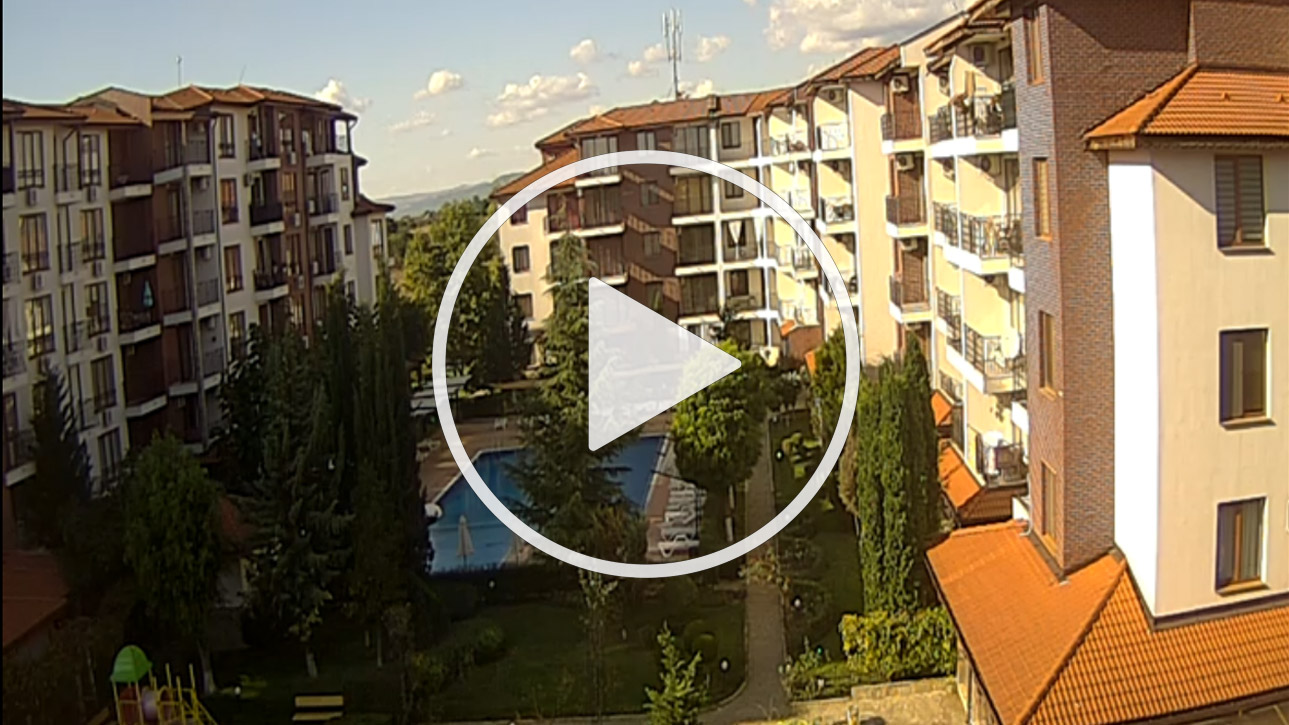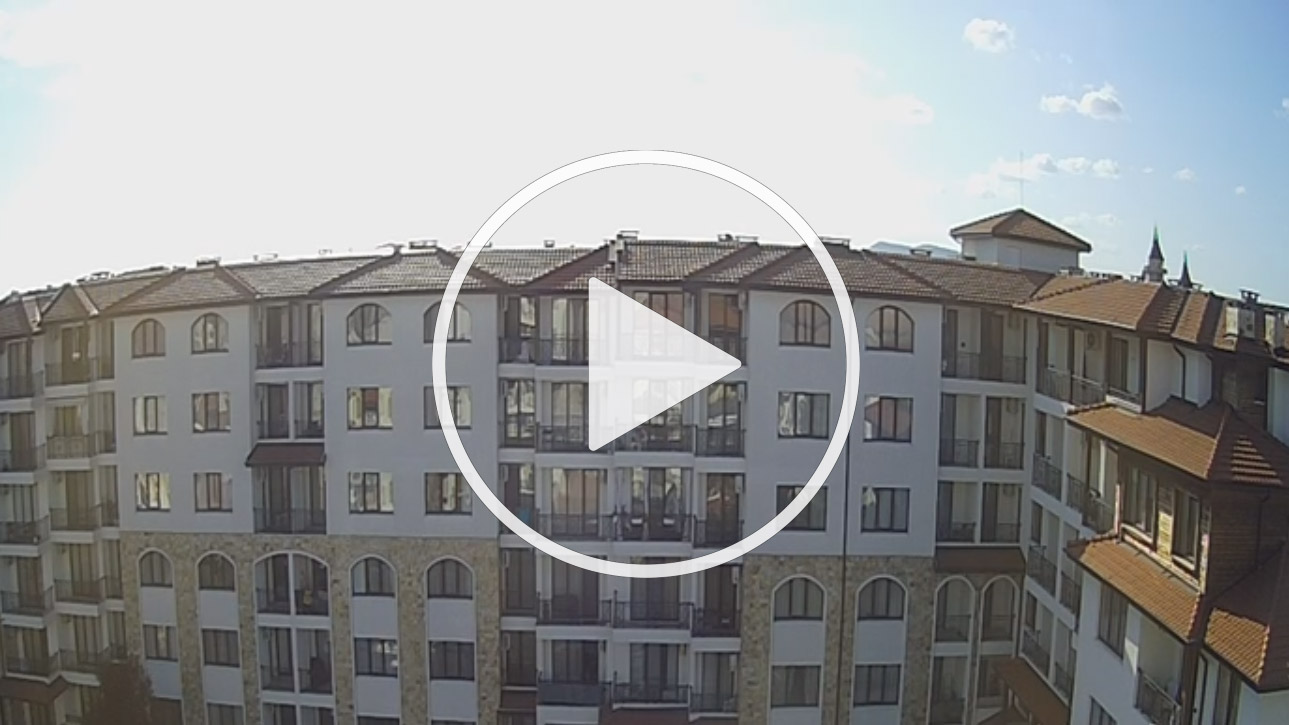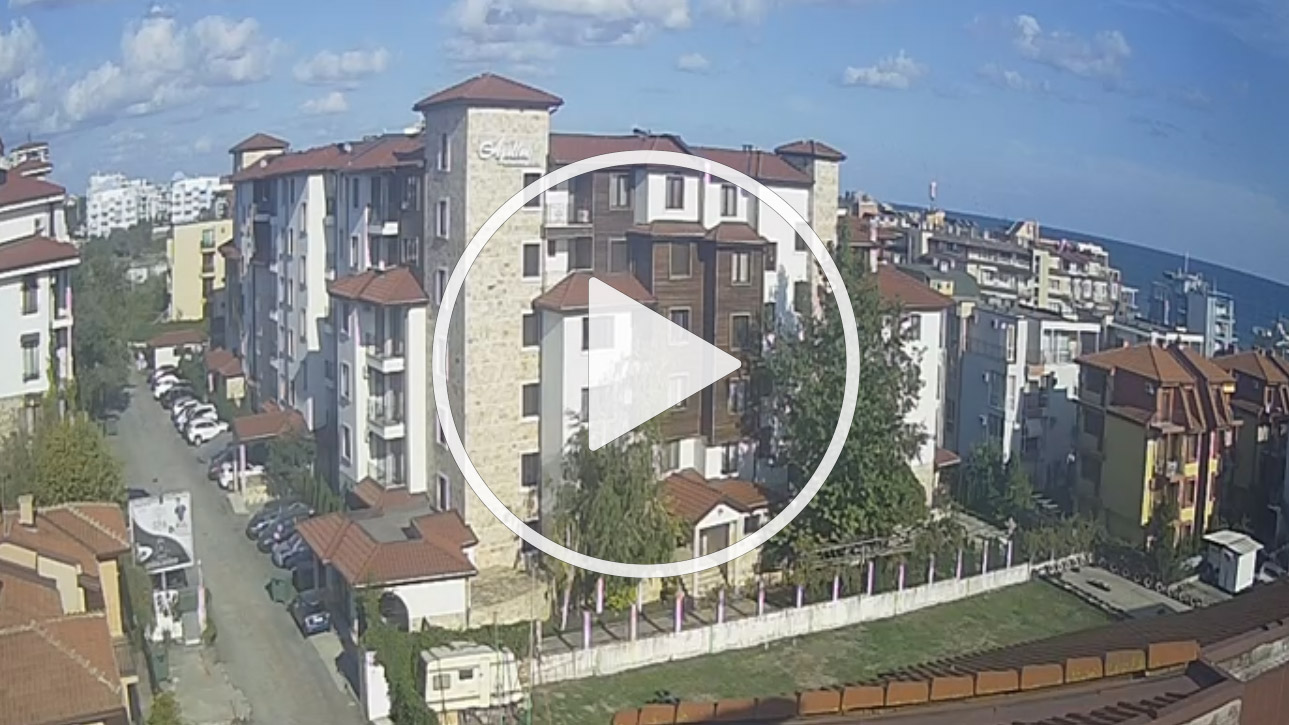Aureliya Live Cam
A prestigious region on the southern Black Sea coast of Bulgaria



History
The Black Sea coast of Bulgaria has a rich and diverse history spanning thousands of years. Here is an overview of some key historical periods and events:
Thracian Settlements: Before the arrival of the Greeks, the region was inhabited by Thracian tribes. They established various settlements along the coast, including important centers like Odessos (present-day Varna) and Anchialos (present-day Pomorie).
Greek Colonization: Starting in the 6th century BC, Greek settlers established colonies along the coast, including Apollonia Pontica (present-day Sozopol) and Mesembria (present-day Nessebar). These colonies played a crucial role in trade and cultural exchange.
Roman Conquest: The Romans conquered the region in the 1st century BC. It became part of the province of Moesia and later Thrace.
Development and Urbanization: The Romans established various towns and cities along the coast, such as Deultum (near present-day Debelt) and Marcianopolis (near present-day Devnya). These cities became important centers for trade, industry, and culture.
Eastern Roman Empire: After the division of the Roman Empire, the coast became part of the Eastern Roman (Byzantine) Empire. Coastal towns like Nessebar (then Mesembria) played strategic roles in Byzantine defense.
First Bulgarian Empire: In the 7th century AD, the Bulgars, a Turkic people, established the First Bulgarian Empire. The coast remained a contested region between the Byzantines and Bulgarians.
Second Bulgarian Empire: After a period of Byzantine control, the region fell under the rule of the Second Bulgarian Empire in the 13th century. Major towns like Varna and Nessebar flourished during this time.
Ottoman Conquest: The Ottomans captured Bulgaria in the late 14th century. The coastal region, including cities like Varna, remained under Ottoman control for nearly five centuries.
18th and 19th Centuries: The Bulgarian National Revival (18th-19th centuries) saw a resurgence of Bulgarian cultural, educational, and economic activities, including along the coast.
Liberation and Independence: Bulgaria gained independence from the Ottoman Empire in 1878, and the entire coastline became part of the newly established Bulgarian state.
20th Century: The Black Sea coast, particularly Varna and Burgas, saw significant industrial development and urbanization during the 20th century.
Tourism and Economy: In recent decades, the Black Sea coast has become a popular tourist destination, known for its sandy beaches, resorts, and cultural heritage sites.
This history has shaped the cultural, economic, and geopolitical significance of Bulgaria's Black Sea coast, leaving behind a legacy of diverse influences and historical landmarks.
Top Tourist Attractions
The Black Sea coast offers a wealth of attractions for visitors. Here are some of the top tourist destinations along the coast:
- Nessebar (Ancient City of Nesebar): This UNESCO World Heritage Site is known for its exceptionally well-preserved medieval architecture. The town is situated on a small peninsula and is often referred to as the "Pearl of the Black Sea."
- Varna Archaeological Museum: It houses an impressive collection of artifacts from the region's long history, including pieces from the Thracian, Roman, and Byzantine periods.
- Sea Garden (Morska Gradina): A large, beautiful park along the coast, featuring landscaped gardens, fountains, and sculptures.
- Dormition of the Mother of God Cathedral (Varna Cathedral): A stunning example of Bulgarian Orthodox architecture.
- Sea Garden of Burgas (Morska Gradina): Similar to Varna's Sea Garden, this park offers a pleasant stroll along the coast.
- Burgas Archaeological Museum: It showcases artifacts from various historical periods in the Burgas region.
- Burgas Salt Pans (Atanasovsko Lake): A nature reserve where you can observe a variety of bird species.
- Sozopol: This charming town boasts beautiful beaches and a well-preserved Old Town. It's also known for the Apollonia Art Festival, which celebrates art and culture.
- Balchik Palace and Botanical Garden: A former summer residence of Romanian Queen Marie, the palace and its gardens are a picturesque attraction overlooking the sea.
- Albena: A popular resort town known for its long sandy beach and various entertainment options, including water sports and nightlife.
- Golden Sands (Zlatni Piasaci): A major resort area with a wide sandy beach, numerous hotels, restaurants, and entertainment options.
- Pomorie Salt Museum: Offers insights into the traditional process of salt production.
- Pomorie Monastery "St. George the Victorious": A significant religious and cultural site.
- Primorsko: Offers a combination of beautiful beaches and opportunities for outdoor activities like hiking and water sports.
- Sunny Beach (Slanchev Bryag): One of the most famous and largest resort areas on the Black Sea coast, known for its lively nightlife and a wide range of entertainment options.
These attractions represent just a selection of what the Bulgarian Black Sea coast has to offer. Whether you're interested in history, natural beauty, or seaside relaxation, there's something for every traveler along this picturesque coastline.
Climate
The climate along the Black Sea coast of Bulgaria is characterized as a temperate-continental climate with some maritime influence. Here's a breakdown of the climate in this region:
- Temperature: The summers are warm to hot, with average high temperatures ranging from 25°C to 30°C (77°F to 86°F). In some areas, temperatures can occasionally exceed 30°C (86°F).
- Rainfall: Summers are relatively dry, with occasional thunderstorms. Rainfall is generally low, and the region experiences a significant amount of sunshine.
- Temperature: Autumn is mild, with temperatures gradually decreasing. September can still be quite warm, while November starts to feel cooler.
- Rainfall: Rainfall increases compared to summer, but it's still relatively moderate. October can see a higher frequency of rain.
- Temperature: Winters are generally cold, with average high temperatures ranging from 2°C to 8°C (36°F to 46°F). It's not uncommon for temperatures to drop below freezing, especially at night.
- Snowfall: Snow is possible, but it's not extremely common along the coast. Snowfall is more likely to occur inland and in the higher elevations.
- Temperature: Spring starts off cool but gradually warms up. By May, temperatures become pleasantly mild, with average high temperatures ranging from 14°C to 20°C (57°F to 68°F).
- Rainfall: Rainfall decreases as spring progresses, and the region experiences more sunny days.
- The Black Sea's water temperature varies throughout the year. It's typically warmest in late summer and early autumn, with temperatures in the range of 24°C to 28°C (75°F to 82°F). In winter, the sea is cooler, with temperatures dropping to around 8°C to 10°C (46°F to 50°F).
- Humidity levels tend to be higher during the summer months due to the maritime influence, making the coastal area feel more comfortable even during warm weather.
It's worth noting that microclimates can exist, so there may be slight variations in weather patterns between different areas along the coast. Overall, the Black Sea coast of Bulgaria is a popular destination for its favorable climate, especially during the summer months when it offers warm and sunny conditions for beachgoers and outdoor activities.
Geography
The Black Sea coast of Bulgaria is a region of diverse geography, offering a blend of coastal landscapes, mountains, plains, and wetlands. Here are the key geographical features of this area:
- The coastline stretches for approximately 354 kilometers (220 miles) along the eastern edge of Bulgaria, facing the Black Sea. It is characterized by a variety of beaches, cliffs, and rocky formations.
- The coastal region is marked by relatively narrow coastal plains that extend from the shoreline towards the interior. These plains are generally fertile and support agriculture.
- The Balkan Mountains run parallel to the coast, creating a natural barrier between the coastal region and the rest of Bulgaria. This mountain range is known for its rugged terrain, deep gorges, and dense forests.
- The northernmost portion of the Black Sea coast is influenced by the Danube River, which forms a delta where it meets the sea. This area is characterized by wetlands, lagoons, and a complex network of river channels.
- Along the coast, there are several coastal lakes and lagoons, providing important habitats for various species of wildlife. Examples include Lake Varna and Lake Pomorie.
- Several smaller rivers and streams flow from the interior towards the Black Sea. Some notable examples include the Kamchia River and the Ropotamo River.
- This prominent headland on the northern coast extends into the Black Sea and is known for its rugged cliffs, archaeological sites, and stunning views.
- The Black Sea coast of Bulgaria is home to a number of protected natural areas, including national parks, nature reserves, and wetland habitats. These areas are important for preserving biodiversity and natural landscapes.
- The coast is known for its sandy beaches, especially in popular resort areas like Sunny Beach and Golden Sands. Some areas also feature sand dunes, which contribute to the coastal ecosystem.
- The Black Sea itself has several interesting underwater features, including underwater caves, canyons, and unique geological formations.
The geography of the Black Sea coast of Bulgaria contributes to the region's natural beauty and biodiversity. The combination of coastal features, mountains, and wetlands creates a diverse and picturesque landscape that attracts both tourists and nature enthusiasts.